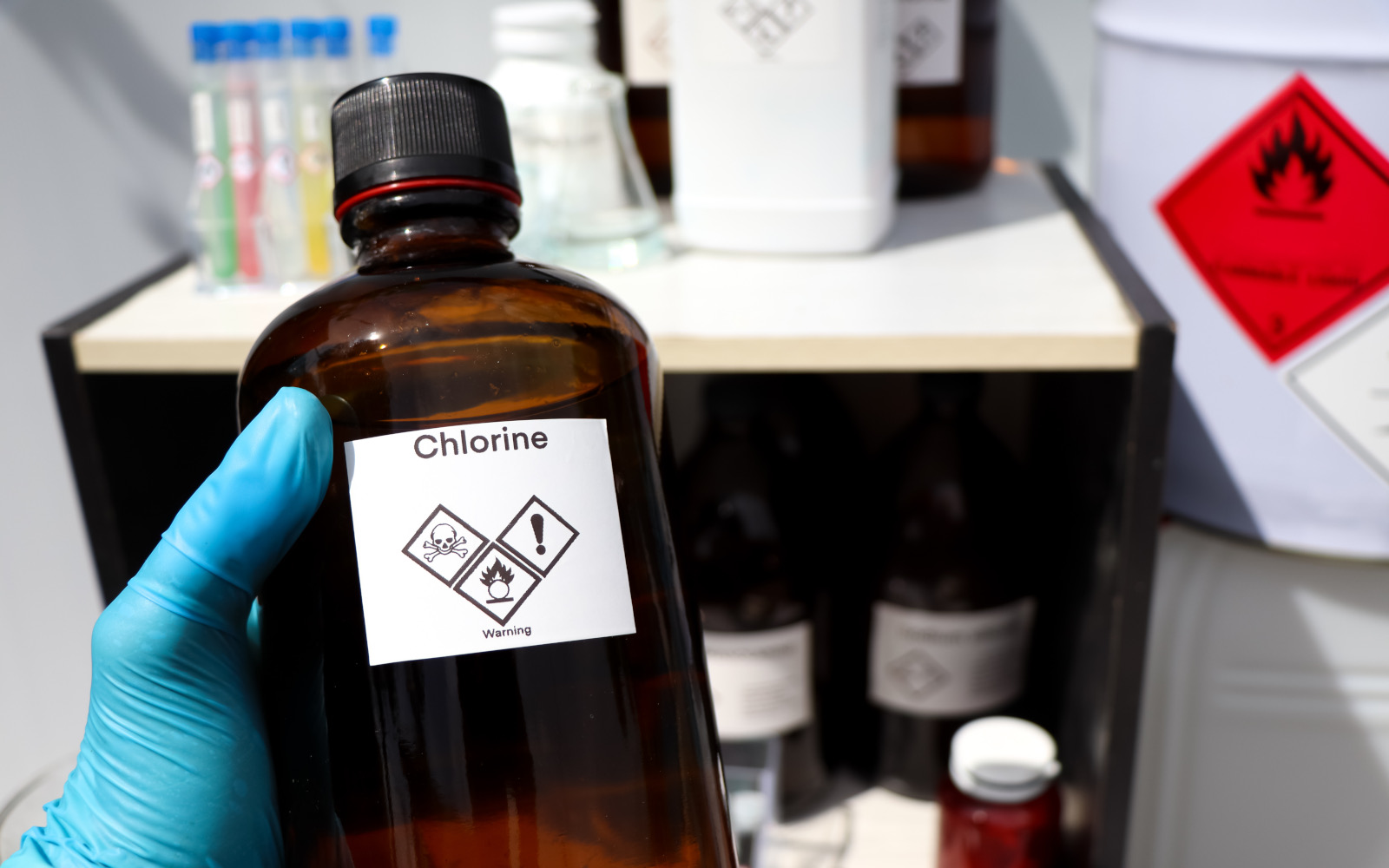Chlorine (Cl2) is a greenish-yellow gas with a pungent odor, widely used for its disinfectant and bleaching properties. It is a common chemical in water treatment, industrial processes, and manufacturing.
While chlorine is essential in various applications, it poses significant health risks, particularly in high concentrations.
This article examines the health effects of Cl2 exposure, industries that commonly use it, and crucial safety measures for workers and safety managers.
Health Effects of Chlorine Exposure
Chlorine is a potent irritant that can cause various adverse health effects upon exposure. The severity of these effects depends on the concentration and duration of exposure, as well as the route of exposure (inhalation, dermal contact, or ingestion).
Acute Exposure
- Respiratory Irritation: Inhalation of Cl2 gas can cause immediate irritation of the respiratory tract, leading to symptoms such as coughing, choking, chest tightness, and shortness of breath. High concentrations can cause severe respiratory distress, pulmonary edema, and potentially life-threatening conditions.
- Eye and Skin Irritation: Direct contact with Cl2 gas or its solutions can cause severe irritation, redness, and burns to the eyes and skin. Prolonged exposure can result in permanent damage, including corneal injury and skin burns.
- Gastrointestinal Effects: Ingestion of Cl2-contaminated water or food can cause nausea, vomiting, and abdominal pain.
Chronic Exposure
- Chronic Respiratory Conditions: Long-term exposure to lower concentrations of chlorine can lead to chronic bronchitis, asthma, and other respiratory conditions. Individuals with pre-existing respiratory issues are particularly vulnerable.
- Sensitization: Repeated exposure to chlorine can lead to sensitization, resulting in allergic reactions upon subsequent exposures, even at lower concentrations.
Industries and Applications
Chlorine is extensively used across various industries due to its disinfectant and bleaching properties. Key applications include:
- Water Treatment: Chlorine is widely used for disinfecting drinking water, wastewater, and swimming pools, ensuring water safety by killing harmful bacteria and pathogens.
- Chemical Manufacturing: It is a key raw material in producing various chemicals, including PVC, chlorinated solvents, and pesticides.
- Pulp and Paper Industry: Chlorine is used in bleaching wood pulp to produce white paper products.
Safety Considerations and Best Practices
Due to the hazardous nature of chlorine, stringent safety measures are essential to prevent exposure and ensure a safe working environment.
Monitoring and Detection
- Gas Detection Systems: The use of Cl2 gas detectors, such as the Accusafe or GasD 8000 by Interscan, is crucial for monitoring ambient chlorine levels in workplaces. These systems should be regularly calibrated and maintained to ensure accurate readings.
- Ventilation: Adequate ventilation, including local exhaust systems, is necessary to disperse chlorine gas and maintain safe air quality in work areas.
Personal Protective Equipment (PPE)
- Respiratory Protection: Workers should use appropriate respiratory protective equipment, such as full-face respirators with Cl2 gas cartridges or self-contained breathing apparatus (SCBA), especially in areas with potential chlorine exposure.
- Eye and Skin Protection: Protective clothing, gloves, and safety goggles or face shields are essential to protect against Cl2 gas and liquid contact.
Emergency Response and Training
- Emergency Procedures: Clear emergency response protocols should be established, including evacuation plans, first aid measures, and spill containment. Safety showers and eyewash stations should be accessible in areas where chlorine is handled.
- Training and Education: Regular training on the hazards of chlorine, proper use of PPE, and emergency response actions is critical. Workers should be trained to recognize the symptoms of chlorine exposure and understand the necessary steps to take in an emergency.
Lesser-Known Insights and Considerations
- Reactivity: Cl2 is highly reactive and can form hazardous compounds when it comes into contact with organic materials or other chemicals. Proper storage and handling procedures are necessary to prevent dangerous reactions.
- Environmental Impact: Chlorine can have significant environmental effects, including the formation of harmful byproducts like trihalomethanes (THMs) in water. Responsible use and disposal are crucial to minimize environmental impact.
Cl2 is a versatile chemical with essential applications in various industries, but its potential health risks necessitate careful handling and rigorous safety protocols.
Understanding the health effects of chlorine exposure, implementing effective monitoring systems, and adhering to best practices for safety are vital for protecting workers and ensuring a safe working environment.
For more information on chlorine gas detection systems and to request a quote for the Accusafe or GasD 8000 by Interscan, contact us today. Prioritize safety with reliable gas detection solutions tailored to your industry’s needs.


